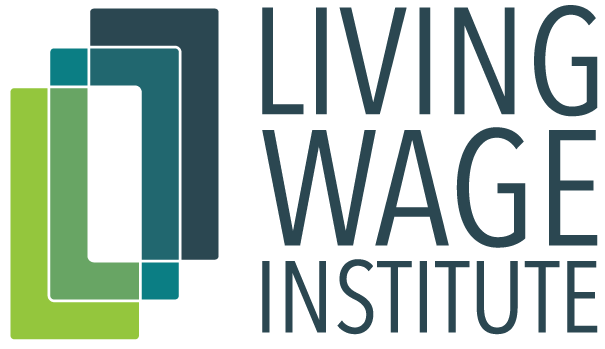



For further information, please visit the FAQs and Methodology pages or submit a question or request through the Contact page.
© 2024 Dr. Amy K. Glasmeier and the Massachusetts Institute of Technology
SIGN INPublished in Fast Company
The federal minimum wage was raised to $7.25 per hour on July 24, 2009, an increase from $6.55 per hour—a rate set in July of 2008, which was itself an increase from $5.85 per hour set in 2007. Yes, the minimum wage increased two years in a row as part of the Fair Minimum Wage Act before staying stagnant for more than 10 years. But the cost of living didn’t stay stagnant in that same amount of time. The Fight for $15 movement has been advocating for a raise in the wage for years, and now several candidates in the Democratic primary are proposing an increase to $15 per hour nationally. Here’s a look at a few things that have seen price increases while the federal minimum wage stayed the same.
HOUSING
According to the latest Census data, the average sales price of a new home sold in the U.S. in September 2019 was $362,700. In the same month of 2009, it was $290,300—a $72,400 difference over 10 years. Renters are being burdened financially, as well; in 2009, the monthly median asking rent for an unfurnished apartment was $1,064; in 2018 (the most recent data), it was $1,588—a 49% increase.
EDUCATION
The high cost of college has also been part of the national conversation, but exactly how much more does a degree costs now than 10 years ago? Between 2009-10 and 2019-20, average published tuition and fee prices rose by $670 (in 2019 dollars) at public two-year colleges, by $2,020 at public four-year institutions, and by $6,210 at private nonprofit four-year colleges and universities, according to Collegeboard. Here’s one specific example: Tuition at New York University in 2009 was $36,586. Now, tuition for the 2019-2020 year at NYU is $53,308.
TRANSPORTATION
Gasoline is a constantly fluctuating cost, and in November 2009, the average price of a gallon was $2.66 (up from the beginning of the year when a gallon cost $1.78 on average). Today, we’re back to around that same price—$2.62 for the average cost of a gallon of gas, according to November 2019 data—but over the decade, Americans saw gas prices jump to about $3.70 and above at least five times. For commuters in New York City who take the subway, a single ride was $2.25 and a monthly pass $81 in 2009; now, straphangers pay $2.75 and $127 respectively. Flying has gotten a bit more expensive over the decade, depending on the airport you’re departing from; the average price of a domestic fare out of JFK was $309.66 in 2009 (which is actually $369.88 in 2019 dollars); in 2019, it’s $402.09.
FOOD
The price of a gallon of milk is often included in statistics about the costs of living over certain years, and in November of 2009, the average price of a gallon of whole milk was $3.03, according to the U.S. Bureau of Labor Statistics. In November of 2019, that same gallon cost $3.18. That’s not a huge jump and may have something to do with dairy farms struggling overall. The price of a dozen eggs has actually gone down, from $1.70 in November 2009 to $1.40 in November 2019. But other food items like ground beef ($2.06 per pound in 2009 vs. $3.81 in 2019), bacon ($3.50 per pound vs. $5.50), tomatoes ($1.72 per pound vs. $1.90), and chicken ($1.25 per pound vs. $1.43) have seen price increases.
FUN
Maybe all this money stress is getting to you, and you want to escape. If you headed to the movies in 2009, you’d pay an average of $7.50. Today, the average price of a movie ticket in the U.S. is more than $9. What about a bigger fun expense, like a day trip to Disneyland? For one adult in 2009, a one-day park ticket was $72, according to a Wayback Machine snapshot of the Disneyland website. Today, a one-day one-adult Disneyland ticket costs a minimum of $104 if you pick a “value” day and up to $149 on a “peak” day.
While the cost of many of these items is rising faster than inflation, the minimum wage hasn’t even done that. If it was set to go up with inflation, that same $7.25 in 2009 would be $8.62 in today’s dollars.
Even that inflation-adjusted minimum wage wouldn’t be equivalent to a living wage. The actual numerical value of a living wage depends on where you live; in Manhattan, it’s $17.56 per hour for one adult with no children, according to an MIT living wage calculator. But even in Benson County, North Dakota—one of the lowest cost of living counties in the country—you’d need to make $11.01 an hour (with no children) to have a living wage.
If you go by what President Franklin D. Roosevelt said when he enacted the federal minimum wage in 1938, a living wage is what it was supposed to be; “It seems to me to be equally plain that no business which depends for existence on paying less than living wages to its workers has any right to continue in this country,” he said. “…[B]y living wages I mean more than a bare subsistence level—I mean the wages of decent living.”